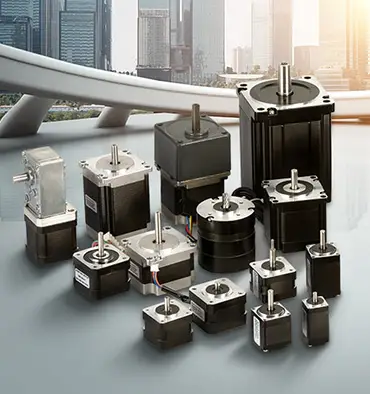Can we use stepper motor instead of servo motor?
Stepper motors and servo motors are both types of electric motors that are used in a variety of applications, including CNC routers, 3D printers, and other precision machines. While both types of motors are able to produce precise, controlled motion, there are several key differences between stepper motors and servo motors. In this article, we will explore the differences between stepper motors and servo motors and explain when it is appropriate to use each type of motor.
What Are Stepper Motors?
Stepper motors are electric motors that are designed to rotate in precise increments, or steps, rather than continuously. These motors are widely used in a variety of applications, including CNC routers, 3D printers, and other precision machines. Stepper motors work by converting electrical energy into precise, controlled mechanical motion. These motors use a series of electromagnets and a rotor to produce rotation in precise steps. When an electrical current is applied to the electromagnets, the magnetic field is created, which attracts the rotor and causes it to rotate. By carefully controlling the current applied to the electromagnets, it is possible to control the rotation of the rotor in precise steps.
What Are Servo Motors?
Servo motors are electric motors that are designed to produce precise, controlled motion. These motors are widely used in a variety of applications, including CNC routers, 3D printers, and other precision machines. Servo motors work by using a feedback system to monitor the position of the rotor and adjust the electrical current applied to the motor accordingly. This allows the motor to maintain precise control over the position of the rotor.
Differences Between Stepper Motors and Servo Motors
There are several key differences between stepper motors and servo motors. These differences include:
- Torque: Stepper motors are typically able to produce higher levels of torque than servo motors. This makes them well-suited to applications that require high levels of torque, such as CNC routers and other precision machines.
- Speed: Servo motors are typically able to operate at higher speeds than stepper motors. This makes them well-suited to applications that require high speed and quick response times, such as robotics and other high-speed machines.
- Precision: Servo motors are typically more precise than stepper motors. This is due to their use of a feedback system, which allows them to maintain precise control over the position of the rotor. Stepper motors, on the other hand, rely on the accuracy of the control signals to maintain precision.
- Cost: Stepper motors are typically less expensive than servo motors. This is due to the complexity of the feedback system used in servo motors, which increases the cost of these motors.
When to Use Stepper Motors
Stepper motors are typically used in applications that require high levels of torque and precise, repeatable motion. These motors are well-suited to applications such as CNC routers, 3D printers, and other precision machines. Stepper motors are also a good choice for applications that require low to moderate speeds and do not require quick response times.
When to Use Servo Motors
Servo motors are typically used in applications that require high speeds and quick response times. These motors are well-suited to applications such as robotics, where fast and precise motion is required. Servo motors are also a good choice for applications that require high levels of precision, such as in medical equipment and other precision machines.
In conclusion, stepper motors and servo motors are both types of electric motors that are used in a variety of applications. While both types of motors are able to produce precise, controlled motion, there are several key differences between stepper motors and servo motors, including torque, speed, precision, and cost. Stepper motors are typically used in applications that require high levels of torque and precise, repeatable motion, while servo motors are typically used in applications that require high speeds and quick response times.


Leave a Reply